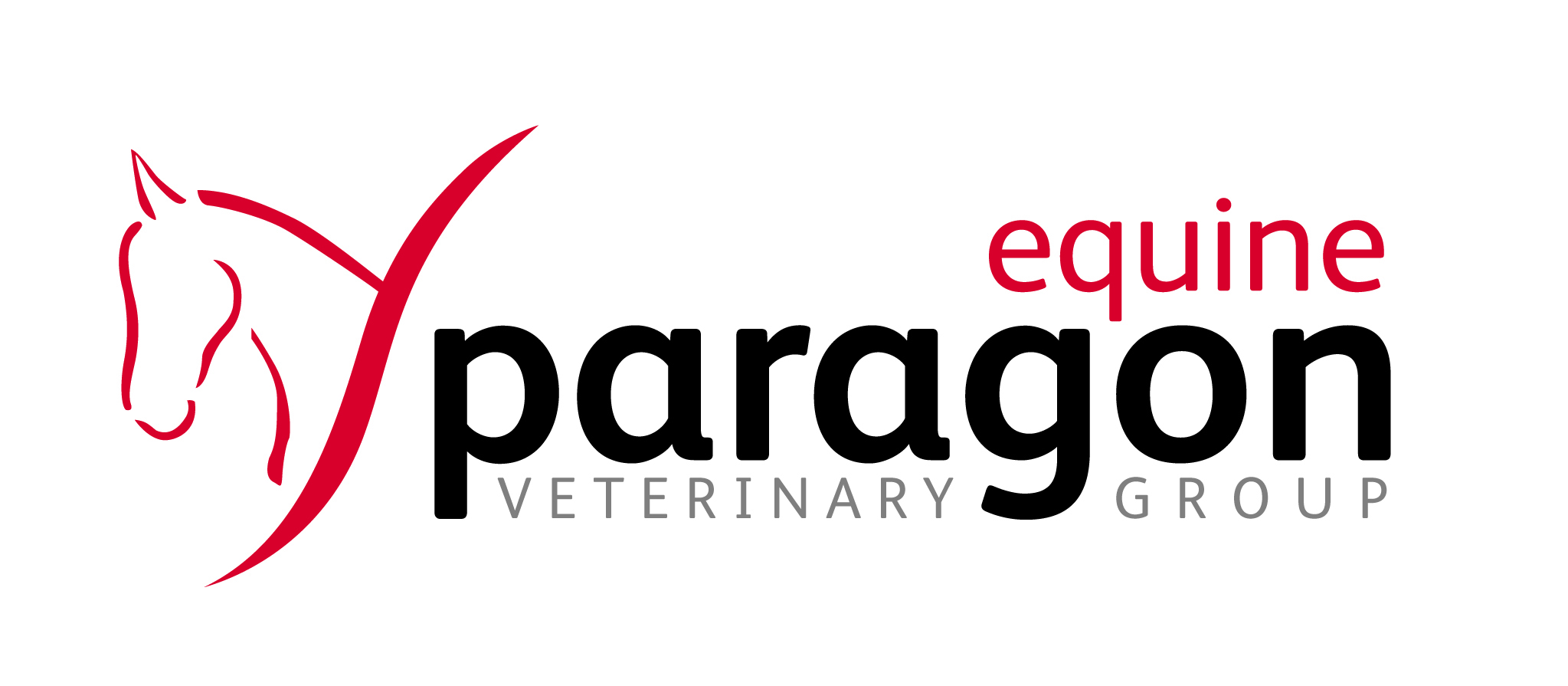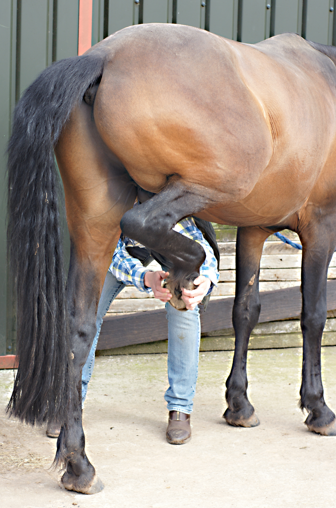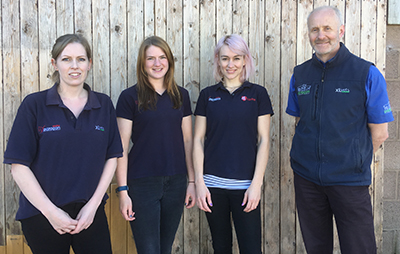Ground Conditions, Lameness & Injuries
The lovely sunshine has been a welcome break from the typical British summertime for most of us. However, as much as we might enjoy more hours in the day for riding out and being able to feel our fingers when mucking out the heat can present a range of often hidden problems to horses and ponies. Sarah Hogg BA VetMB MRCVS from Paragon Equine explains …. why hard, sun-baked ground can make deciding whether to compete or work horses a difficult choice.
 As the season progresses, the going is likely to become deep, soft and slippery offering up a wholly different set of hazards. It isn’t just horses in competition that can be affected – adverse ground can be an issue for all horses in work or even turned out, especially if they have chronic lameness issues or old injuries.
As the season progresses, the going is likely to become deep, soft and slippery offering up a wholly different set of hazards. It isn’t just horses in competition that can be affected – adverse ground can be an issue for all horses in work or even turned out, especially if they have chronic lameness issues or old injuries.
Horses don’t always take the best care of themselves either, so it’s important that as owners we understand the hazards ground conditions can present and decide what level of work is suitable. It’s far better to prevent career or even life-threatening injuries than to try and treat them.
Hard Ground
Hard ground absorbs less of the shock each time a hoof hits it. Instead, the entire stress of impact is transmitted directly to the leg. As the ground becomes drier, more and more force is put on the horse’s body. As the horse then works up through the paces the forces increase further – a slow hack is a lot less wearing than canter work. Jumping also increases the load felt by joints and tendons. As the horse lands, very little of the impact is absorbed by the ground. The distal (lower) limb absorbs most of the concussive shock from each footfall, sending most of the stress into the coffin, pastern and fetlock joints.
Symptoms of overwork on hard ground can include:
• Warm, swollen joints
• Filling and heat along the tendons; tendonitis
• Lameness – the horse may be obviously lame in one leg or, if more than one leg is affected, they may look generally stiff or pottery
• Muscle soreness along the spine or over the hips, pelvis or shoulders
• Cracked or damaged hooves
Horses are more susceptible to injury on hard ground if they already have a history of osteoarthritis or another ongoing injury. Horses and ponies who suffer with laminitis may also find their condition is more painful on harder ground.
Soft and Deep
Moving towards autumn and winter, soft, deep ground becomes more of a problem.
A sudden slide on slippery mud or grass can seriously impact a horse’s confidence, especially if they hit a fence when out competing. Uneven ground can mean unexpected twisting forces on the legs, which can cause fresh injury or flare-ups of chronic problems such as osteoarthritis.
Horses that suffer with naturally soft hooves struggle more when the ground is wet, and all horses spending time outside become more predisposed to bacterial and fungal conditions, such as thrush. Bringing horses in onto a wood-based bedding product is the best way of drying hooves out. Although paint-on products such as oil can improve the way a hoof looks, real strength and condition comes from inside, so good nutrition is crucial (see below).
On soft going, studs may improve a horse’s confidence. However, if they’re chosen or used incorrectly, they can actually cause injuries like twists or sprains. A small amount of slip as the foot lands is natural and thought to help absorb the shock of impact and forward motion – limiting this too greatly changes the biomechanics of the limb and sends increased force up the leg instead. This is why it is important to always choose the smallest possible studding option for the job your horse is doing. Although some people will put a single stud on the outside of the shoe, most farriers now recommend studding in pairs. Always remember to protect the opposite limb from the point of the stud to prevent knocks or lacerations.
T
If horses do become sore there are several first aid techniques which can help. Rest, either in a small soft paddock or inside suitable bedding, is a good place to start with any limb soreness. Cold hosing affected areas may help to reduce any heat or swelling. Anti-inflammatories (e.g. ‘bute’) may be appropriate, but veterinary advice should always be sought before these are given. Occasionally horses given ‘bute’ without a proper diagnosis can injure themselves further because they don’t feel the true extent of their injury so use the limb more freely.
Once the initial period of soreness has passed, muscle tension and aches can often respond well to bodywork such as massage, physiotherapy, chiropractic treatments or acupuncture. Your vet should be able to recommend a qualified practitioner.
Farriery
Farriery becomes critical to horses as the ground surface moves towards extremes. Each foot should be balanced and well trimmed with a suitable shoe selected for the horse and their workload. Depending on conditions, your farrier may suggest adding studs, a shock-absorbing pad under the shoe or using polyurethane filler.
Conditioning
Even when the ground is ‘ideal’ for your horse, it’s important to make sure they are fit for purpose, to develop muscles and physical endurance. A suitable conditioning schedule is essential to establish tendons and ligaments which are strong and resistant to injury. Any increases in work should be gradual and training should take place over a long enough period of time. ‘Fast forwarding’ tends to result in fatigue, predisposing horses to injury.
Always warm horses up before you ask them to exert themselves and never try to push them beyond their current fitness level to exhaustion.
An appropriate work schedule is also important to keep the horse’s weight in an appropriate range. Underweight horses tend to have poor muscle mass and weaker tendons and ligaments; overweight horses put a lot of unnecessary stress on their soft tissues and bones with each stride. As riders, staying fit and healthy and concentrating on our technique minimises the excessive forces we might put on the horses body.
Nutrition
What we feed our horses provides the building blocks for limb and hoof tissue. Appropriate, good quality supplements can be very beneficial for improving strength and integrity.
Biotin is beneficial to all connective tissue. Therapeutic doses of biotin are much higher than the baseline requirements; horses are unable to store biotin so any excess that isn’t absorbed or utilised is excreted in the urine. Although researchers are unsure about the optimum dosage required, it is generally agreed that about 10 – 20mg day is appropriate. Biotin needs to be fed for around 9 months for good results to be seen.
The amino acids methionine and cysteine are also important foundations, but should ideally be balanced in a supplement containing high quality protein and other amino acids to help the body as a whole.
Copper, zinc, selenium, calcium and manganese are important minerals to be considered depending on the mineral profile of the pasture your horse grazes on.
Your vet or a local nutritionist should be able to offer plenty of advice as to a suitable feeding regime depending on your horse’s activity levels and the season.

The Equine veterinary team from Paragon Equine in Cumbria
Kelly Smith (left), Sian Edwards (2nd left), Equine Technicians/Nurses, Vet Sarah Hogg (2nd right) and Vet Paul May (right).
Tel: 01768 483789
Email: This email address is being protected from spambots. You need JavaScript enabled to view it.
Website: Paragon Equine Veterinary, Cumbria



